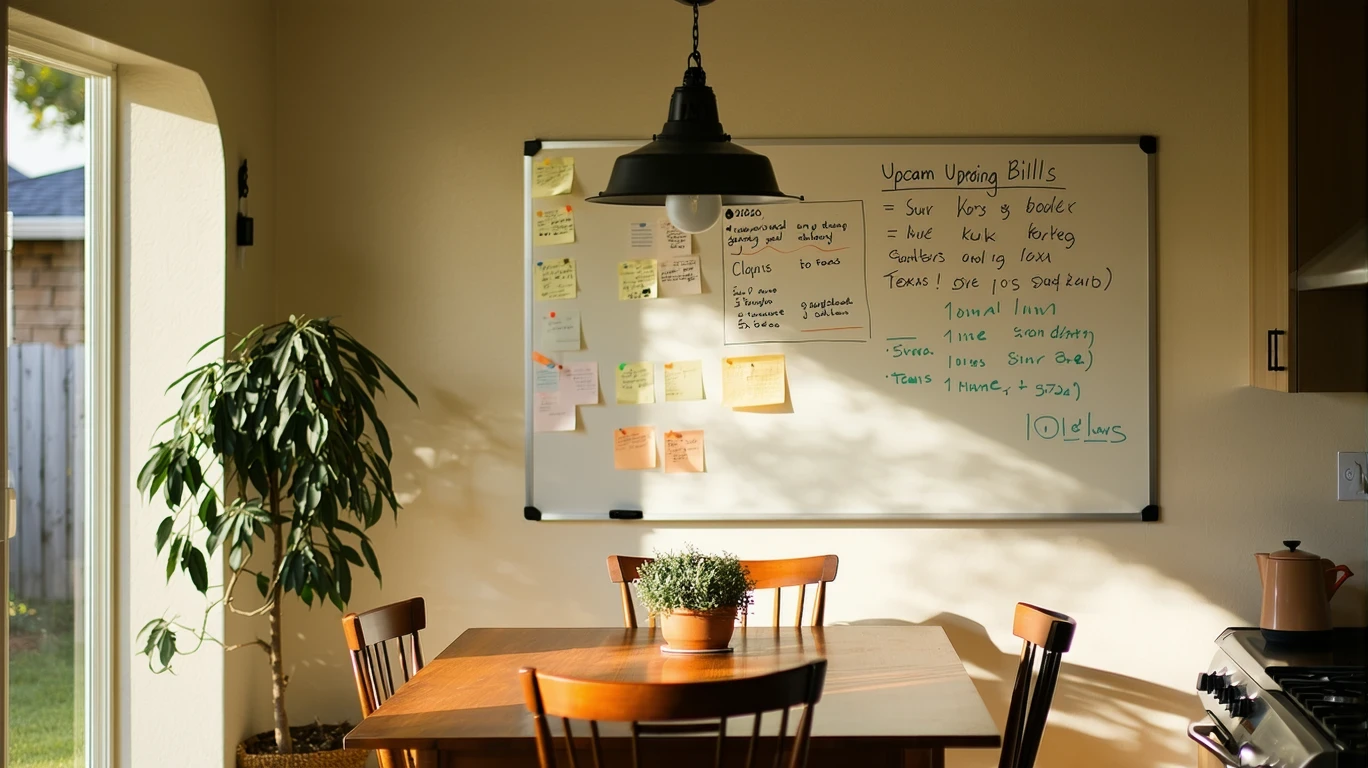It’s 6:30am and Jasmine is already up, sipping coffee while reviewing her budget spreadsheet. Living alone on a remote worker’s salary of $3,000 per month in Austin means watching every dollar. In Austin, housing and electricity often make up more than 55% of a household’s budget. Depending on your lifestyle, your monthly budget in Austin can look very different. Here are some typical examples.

Budgeting Smarter in Austin
Whether you’re a new arrival or long-time Austinite, estimating your monthly expenses is key to living within your means. While rent and utilities eat up a big chunk, there are many other costs to factor in like food, transportation, and savings. Let’s break down some real-world budgets.
What Real Budgets Look Like in Austin
From solo renters to families with mortgages, here’s how monthly spending often shakes out in Austin:
| Expense | Jasmine Single renter ($3,000/mo) | Sam & Elena Dual-income renters ($7,000/mo) | The Ortiz Family Homeowners, 2 kids ($9,500/mo) |
|---|---|---|---|
| Rent/Mortgage | $1,200 | $2,200 | $3,000 |
| Utilities | $150 | $280 | $450 |
| Food | $400 | $800 | $1,200 |
| Transportation | $100 | $500 | $800 |
| HOA/Fees | $0 | $200 | $350 |
| Miscellaneous | $650 | $1,520 | $2,200 |
| Savings | $500 | $1,500 | $1,500 |
| Total | $3,000 | $7,000 | $9,500 |
These estimates reflect common lifestyle costs in Austin. All income figures are gross monthly (pre-tax).
Biggest Cost Drivers
As you can see, housing takes the biggest bite, whether renting or owning. In neighborhoods like Downtown Austin, rent might exceed $2,000/month for a 1BR apartment. Utilities also add up, especially with Austin’s scorching summers. See what you’ll really pay for housing in Austin.
Food is the next biggest line item. The average monthly grocery bill in Austin is $324 for a single person. Dining out will increase that substantially. Learn more about grocery costs in Austin.
Transportation costs vary widely based on your commute. Expect to budget at least $100/month for gas and car expenses. Public transit can be cheaper. Here’s how much riding the bus or train costs in Austin.
Tips to Stretch Your Budget Further
While Austin isn’t cheap, there are ways to save. Shop at discount grocery stores like ALDI or Costco. Sign up for Austin Energy’s Power Partner Thermostat program to get an $85 bill credit for conserving A/C. Install solar screens or plant shade trees to cut cooling costs.
🏆 Tip: Check for utility rebates in Austin to offset energy costs during the hot summer months.
FAQs About Monthly Budgets in Austin
Can you live in Austin on $3,000/month?
Yes, but it will be tight, especially if you live alone. Expect to pay at least $1,000/month for a studio or 1BR and budget carefully for food and bills.
What’s a realistic rent budget for Austin?
Plan to spend at least 30% of your gross income on rent, but 40-50% isn’t unusual. For a $3,000 monthly income, aim for $900-$1,500 in rent.
What’s a good budget for $4,000/month in Austin?
On $4,000/month, you could afford up to $1,600 for a 1BR apartment, $500 for groceries and dining out, $300 for bills, $200 for transportation, and $1,400 for other expenses and savings.
Planning Your Next Step
Now that you’ve seen typical Austin budgets, create your own using these examples as a starting point. Factor in your income, housing costs, regular bills, and savings goals. With smart planning, you can make the most of your money in Austin.
